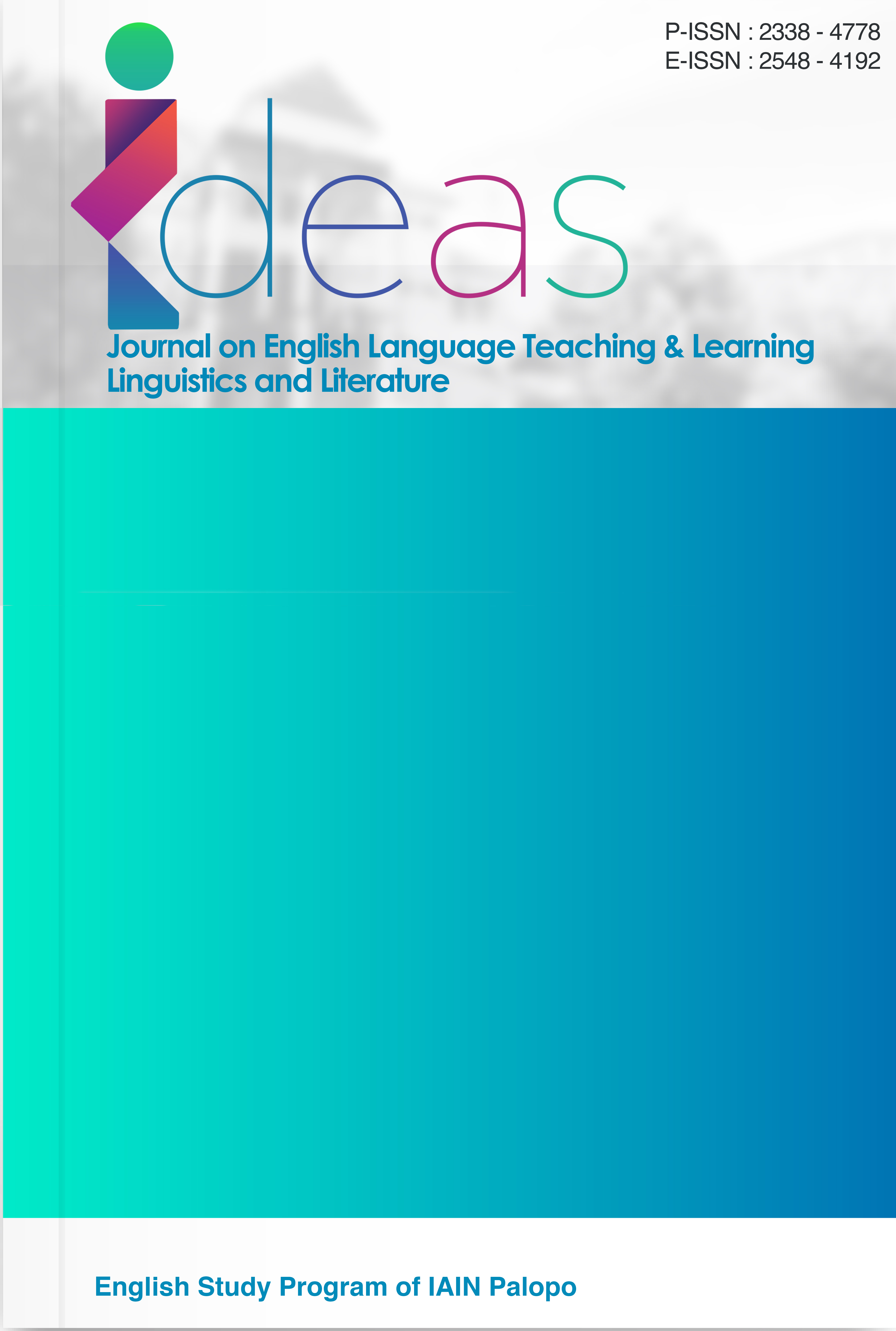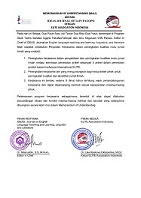Figurative Expressions of Romantic Infatuation In Sabrina Carpenter’s Songs
DOI:
https://doi.org/10.24256/ideas.v13i2.7815Keywords:
Figurative Language, Romantic Infatuation, Song LyricsAbstract
This study investigates the use of figurative language expressing romantic infatuation in selected songs by Sabrina Carpenter. It employs a descriptive qualitative method and applies Knickerbocker and Reninger’s (1974) theoretical framework to examine six types of figurative language: simile, metaphor, personification, hyperbole, irony, and symbol. The study aims to analyze how these figurative elements function semantically to convey emotional depth and thematic meaning, particularly in relation to romantic infatuation. The data were obtained from purposively selected song lyrics based on their emotional relevance. The findings reveal 25 figurative expressions in total, with metaphor being the most frequently used, followed by hyperbole, simile, symbol, personification, and irony. Functionally, these expressions are primarily used to depict emotional pain, intensify feelings, express longing, and evoke personal memories. These results indicate that Sabrina Carpenter’s lyrics utilize figurative language as a meaningful semantic tool to express complex emotional experiences, especially those connected to romantic feelings and vulnerability.
References
Atiya, C. N., & Putra, I. G. A. C. S. (2023). An Analysis of Figurative Language Used in Philip David Wickham’s Songs. Austronesian: Journal of Language Science & Literature, 2(1), 1-8.
Eklesia, D. 2023. Figurative Language Applied In “The Show” Album by Niall Horan. Jurnal Nakula: Pusat Ilmu Pendidikan, Bahasa dan Ilmu Sosial, 1(5), 94- 102. https://doi.org/10.61132/nakula.v1i5.195
Hatfield, E., & Sprecher, S. (1986). Mirror, mirror: The importance of looks in everyday life. State University of New York Press.
Knickerbocker, K. L., & Reninger, H. (1974). Interpreting literature (3rd ed.). Holt, Rinehart and Winston.
Leech, G. 1981. Semantics: The Study of Meaning Second Edition. England: Penguin Books Ltd
Löbner, S. (2013). Understanding semantics (2nd ed.). Routledge.
Murphy, P. 1996. Suryati. (2013). An Analysis of Figurative Language Used in Five For Fighting’s Song Lyrics. (Unpublished undergraduated thesis). FKIP, Universitas Mataram: FKIP Unram
Ramandani, & Hayati. (2024). The Analysis of Figurative Language Found in Song Lyrics of Coldplay’s Album. https://doi.org/10.31941/jele.v4i2.2852
Santika, I. G. N., & Sudiana, I. N. (2021). Insersi Pendidikan Karakter Melalui Pembelajaran Bahasa Indonesia Ditinjau Dari Perspektif Teoretis.
https://ejournal.undiksha.ac.id/index.php/JJPBS
Stefano Irvan Billiano Blent. (2024). The Analysis of Figurative Language used in Hozier’s Album Entitled “Wasteland, Baby!". Undergraduate thesis. Faculty of Foreign Language, Universitas Mahasaraswati Denpasar.
Swarniti, N. W. (2019). The Translation Procedures of Bible Translation. RETORIKA: Jurnal Ilmu Bahasa, 5(2), 187–196.
Swarniti, N. W. 2022. Analysis of Figurative Language in “Easy On Me Song Lyric. RETORIKA: Jurnal Ilmu Bahasa, 8(1), 13-18.
Wellek, R., & Warren, A. (1949). Theory of literature. Harcourt, Brace and Company.
Wibisono, A., & Widodo, S. (2019). Semantics and communication: The meaning behind the words. Lingua Cultura, 13(2), 105–111. https://doi.org/10.21512/lc.v13i2.5432
Downloads
Published
Issue
Section
Citation Check
License
Copyright (c) 2025 Kadek Trisna Ariesta Saraswati, I Made Perdana Skolastika

This work is licensed under a Creative Commons Attribution-ShareAlike 4.0 International License.
Authors retain copyright and grant the journal right of first publication with the work simultaneously licensed under an Attribution-ShareAlike 4.0 International (CC BY-SA 4.0) that allows others to share the work with an acknowledgement of the work's authorship and initial publication in this journal.
Authors are able to enter into separate, additional contractual arrangements for the non-exclusive distribution of the journal's published version of the work (e.g., post it to an institutional repository or publish it in a book), with an acknowledgement of its initial publication in this journal.
Authors are permitted and encouraged to post their work online (e.g., in institutional repositories or on their website) prior to and during the submission process, as it can lead to productive exchanges, as well as earlier and greater citation of published work (See the Effect of Open Access)




